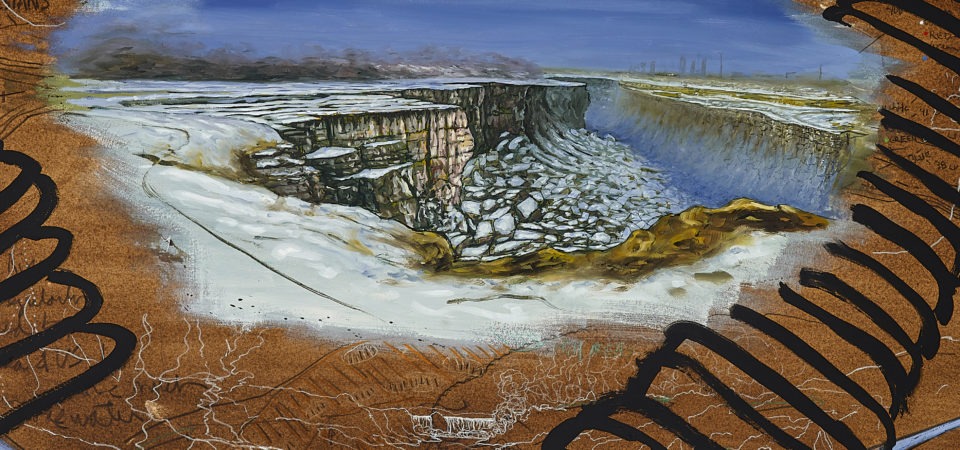Please tell us what you are working on and share your artist’s perspective on the human predicament.
Thirty-five years ago, I started a youth fly fishing program in rural western New York to connect inner city children to their natural environment. I was a novice to the sport but had already realized how it had changed my life and how it was connecting me to issues related to science, community engagement, environmental history, angling in art history, urban migration, and water pollution.
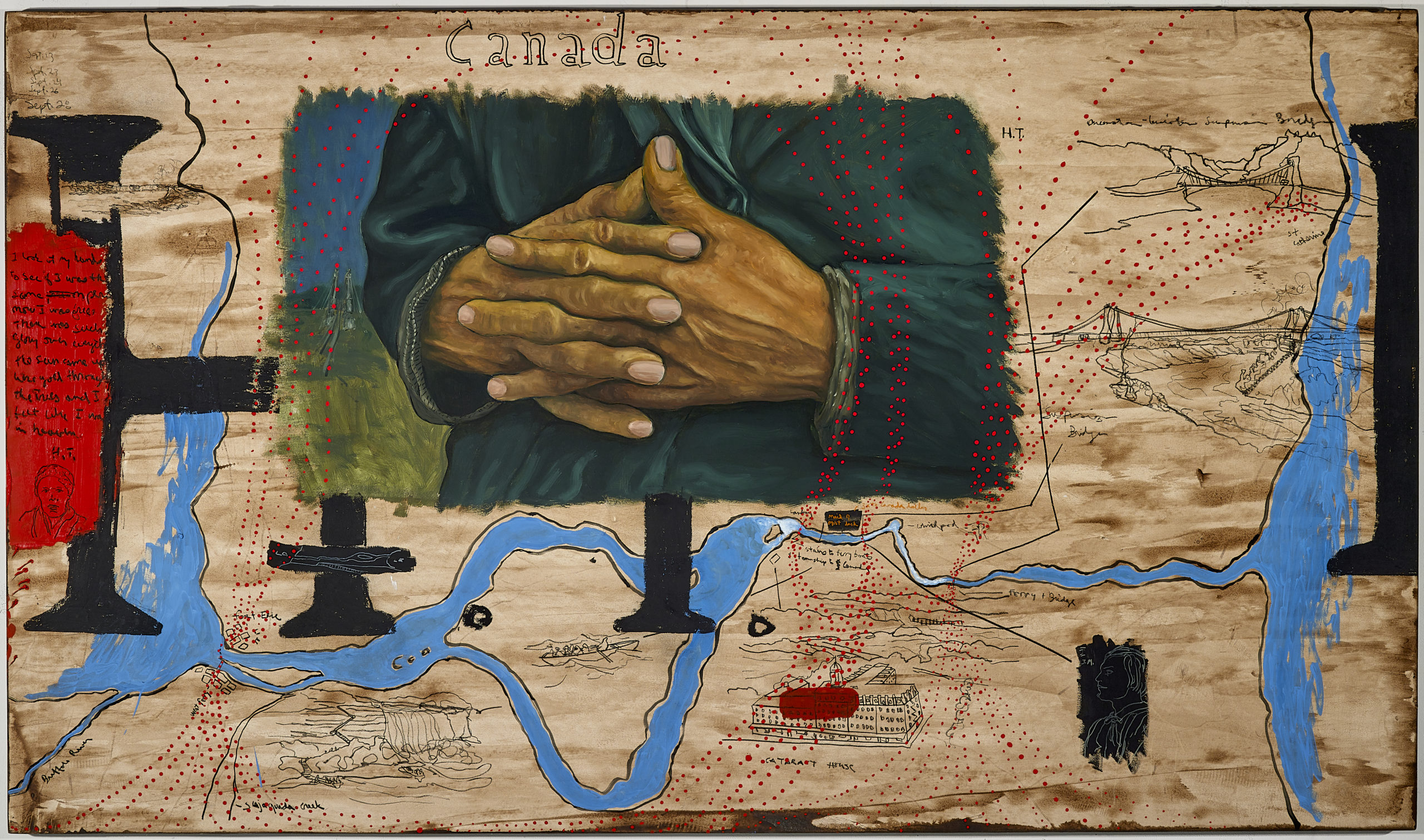
Biological Regionalism: Underground Railroad of the Niagara River, United States of America / Canada
42” x 72”
Niagara River water, walnut ink, oils, pastels, and charcoal on 300 lb Lanaquarelle paper on board
My artwork soon reflected the research I was engaged in and although it seemed as if there was an abrupt change in the content and imagery, I saw a natural progression from the previous work that investigated the landscape as a metaphor for cultural identity. The new work and research started locally as I investigated:
- the indigenous population that settled along on the banks of the small stream that flows behind my home;
- the development of our city that is situated along the same stream;
- the change to the environment that occurred as the city grew;
- the migratory fish species that move up into this stream from one of the Great Lakes;
- the influx of anglers which this migration attracts positively affecting the local economy; and
- the many other issues and environmental policies that affect this stream and the flora and fauna that depend upon its health.
The body of artwork that evolved from this research was entitled Biological Regionalism. My goal with the artwork was to use aesthetics to make accessible connections between complicated scientific, environmental, and social issues so that the public could better understand their local environment. By making a connection to the stream that they walk or drive by, they might be more empowered to protect those natural resources. And, by understanding regional environmental issues, they might be more likely to understand and empathize with similar global issues.

Installation image of Biological Regionalism: Niagara River at the Castellani Museum at Niagara University, NY.
This research and artwork have taken me across the country and the globe, as I have been invited to present exhibitions and installations that use maps, informational text panels, paintings, drawings, videos, publications, and websites to better tell each body of water’s story and its connection to the communities that depend on it. This multidisciplinary approach helps engage a diverse audience. The process is a devotional approach based on scientific data, community interaction, and a historical perspective of the region. My most recent large-scale installation was presented at the Castellani Museum at Niagara University in New York. The project investigated the Niagara River and Niagara Falls which is a few minutes from the museum. Six-foot wide paintings with layered imagery document the cultural importance of the Niagara in American popular culture and how that has changed over time. These paintings reflect on the river’s historical significance to the Underground Railroad, importance to Native American culture, and the pollution of the river and the communities along its banks. The work investigates the human relationships to natural waterways and how these relationships have a direct effect on the flora and fauna of regions across the globe.
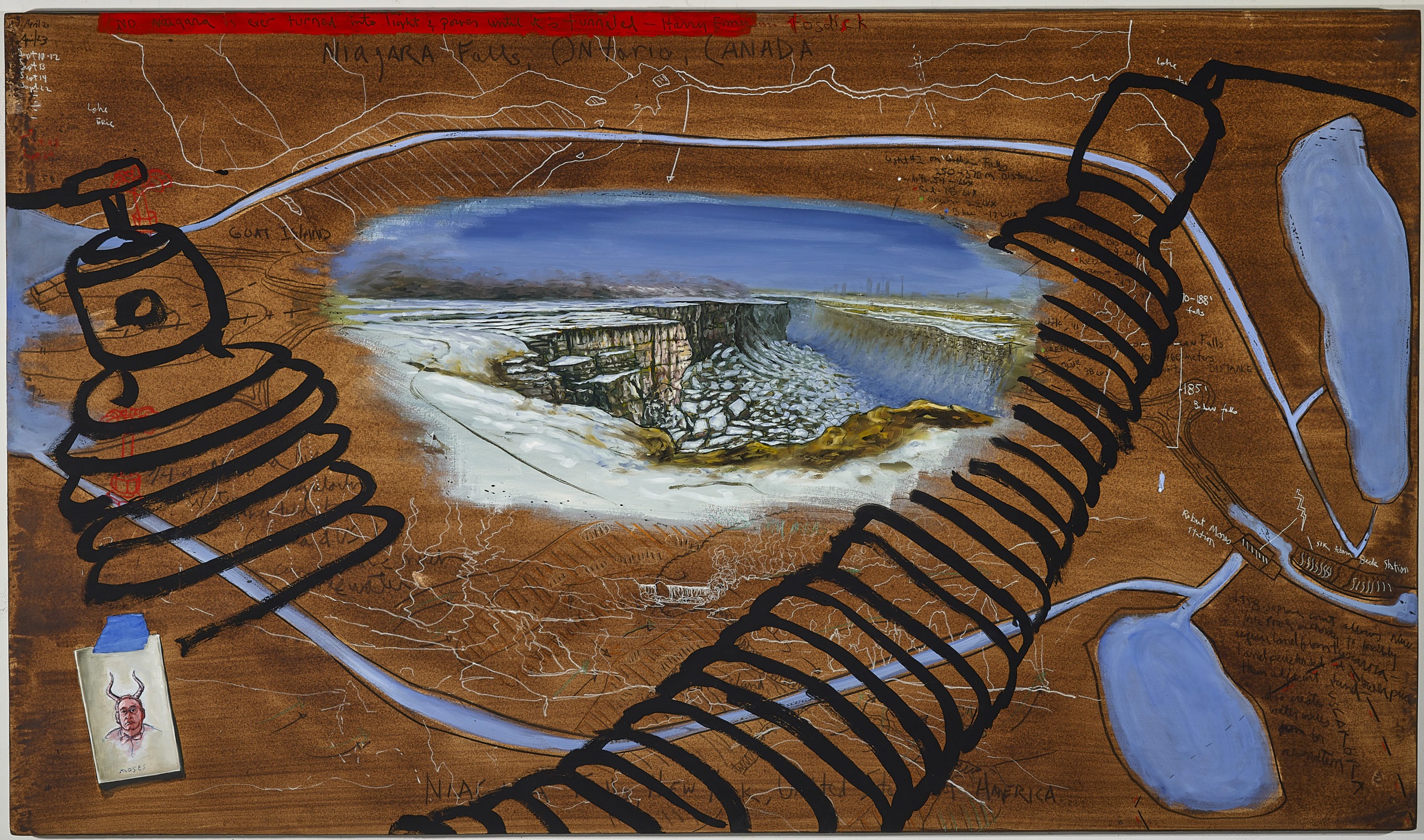
Biological Regionalism: Artificiality of the Niagara Falls, United States of America / Canada
Niagara River water, walnut ink, oils, pastels, and charcoal on 300 lb Lanaquarelle paper on board
42” x 72”
The installation also includes mural-sized maps indicating the communities that the river flowed through and the historical timeline connecting the movement of Niagara Falls to the history of indigenous tribes along the river. This exhibition follows the trajectory of recent projects including Critical Endangered Palms of Cuba (2021-22), a project that explored the endangered native palm species of Cuba; Biological Regionalism: Oswego River and Lake Ontario (2019-2022), which examined the history of the Oswego River, its challenges, and the prospects for improvement in the future; and The Lost Beauty: Iceberg Series (2021), an investigation into climate change, its effects on vulnerable communities and the disappearing glacial patterns around the Icelandic region and other parts of the world. The Extinct Birds Project (2015-2019), outlines the causes for the extinction of eighteen bird species, including a narrative about each bird collector, and a descriptive history of American environmental policies and international classification of species’ populations.
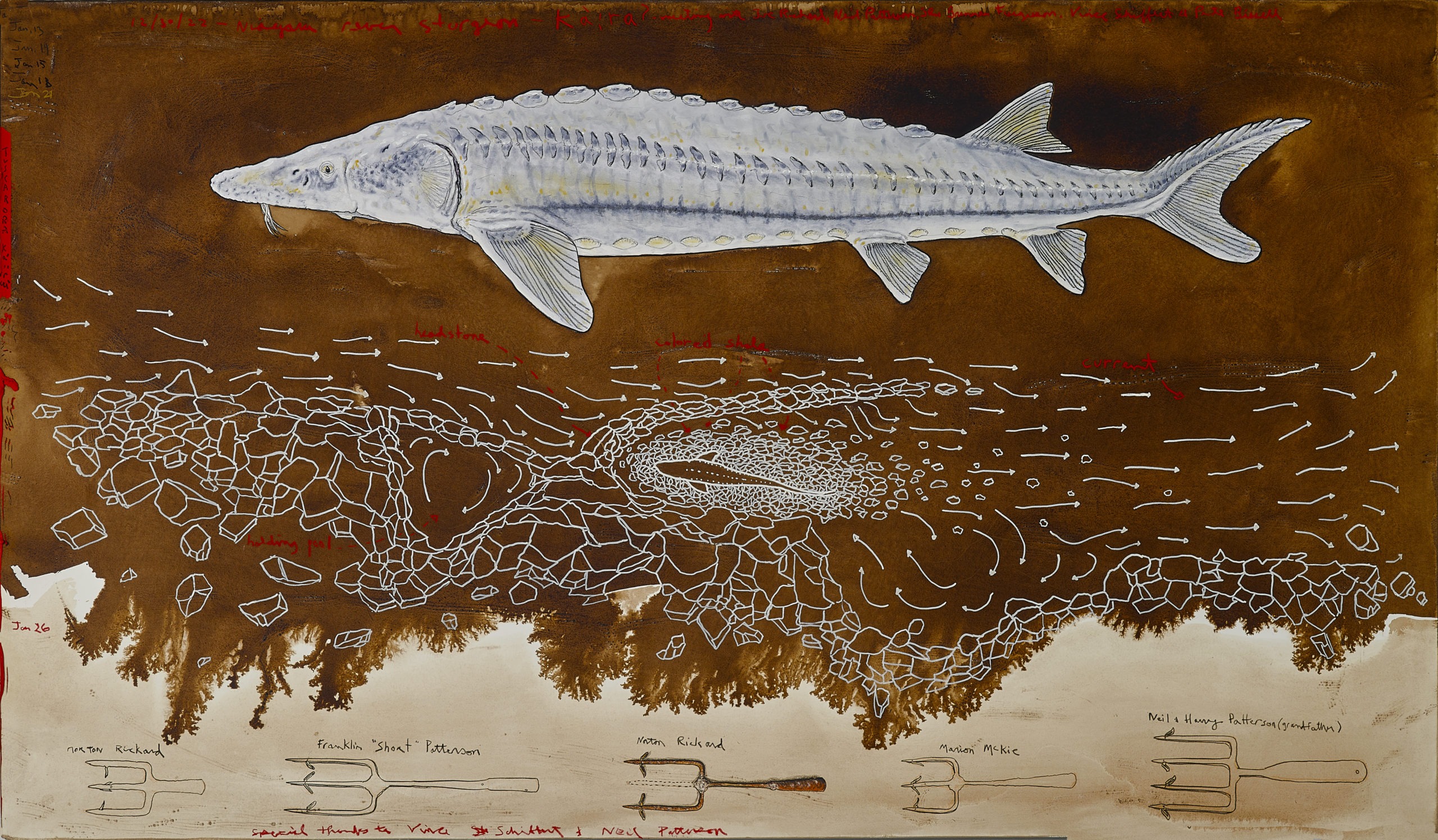
Biological Regionalism: Tuscarora Tradition of Sturgeon Spearfishing in the Niagara River, United States of America / Canada
Niagara River water, walnut ink, oils, pastels, and charcoal on 300 lb Lanaquarelle paper on board
42” x 72”
Currently, my wife and I are spending five months traveling around the world investigating bodies of water as we prepare for an upcoming exhibition and publication in 2025.
What role do you see the arts playing in this pivotal time?
Arts have the chance to link diverse sections of the community and seduce viewers through aesthetics to engage them in connecting their personal experience to complex environmental and social issues.
What new stories will help us imagine a livable and sustainable world?
We need to provide hope by identifying examples of policies and projects that have been successful, offering options for what the public can to do make a difference and highlighting examples of organizations that make positive change in their communities and globally.
What makes you happy in these difficult times?
I find the greatest joy being with family and being in nature. As a fly-fishing guide, I often spend eight to ten hours a day outside with clients who I am trying to connect to our environment. It also requires that I be knowledgeable about the condition of several streams in my region. It refreshes and provides a sense of perspective to have the pulse on the natural cycles of this little part of the world.
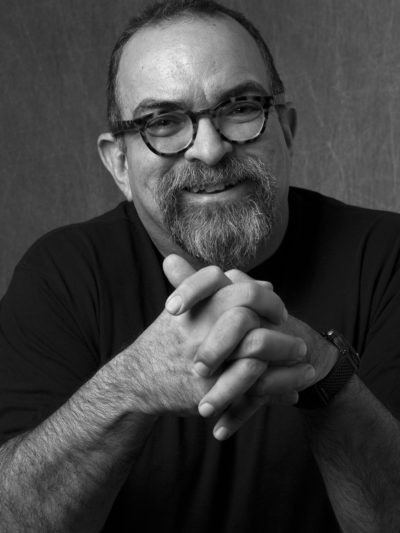 Alberto Rey is an Emeritus SUNY Distinguished Professor, an artist, a fly-fishing guide, the founder and director of a youth fly fishing program and a writer. A detailed description of his work and career is available on albertorey.com and a list of full color exhibition publication with pdfs are available on canadawaypress.com.
Alberto Rey is an Emeritus SUNY Distinguished Professor, an artist, a fly-fishing guide, the founder and director of a youth fly fishing program and a writer. A detailed description of his work and career is available on albertorey.com and a list of full color exhibition publication with pdfs are available on canadawaypress.com.
You can also follow me on Facebook.
Photo: David Moog
This article is part of the MAHB Arts Community‘s “More About the Arts and the Anthropocene”. If you are an artist interested in sharing your thoughts and artwork, as it relates to the topic, please send a message to Michele Guieu, Eco-Artist and MAHB Arts Editor: michele@mahbonline.org. Thank you. ~

